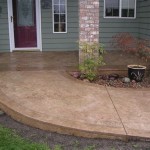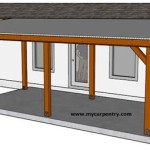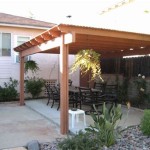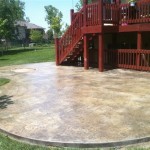Beautifying Your Patio With Pavers And Stones Together Ideas
Creating an inviting and aesthetically pleasing patio is a common goal for homeowners looking to enhance their outdoor living spaces. Using a combination of pavers and stones offers a versatile approach to achieving this, allowing for diverse designs, textures, and colors. This article explores various ideas and considerations for incorporating pavers and stones harmoniously in patio design.
The strategic combination of pavers and stones can drastically alter the look and feel of a patio, transforming it into a functional and visually appealing extension of the home. The selection process involves careful consideration of several factors, including the overall aesthetic, functionality, budget, and maintenance requirements. Proper planning and execution are crucial for ensuring a durable and beautiful outcome.
Understanding the Characteristics of Pavers and Stones
Pavers, typically manufactured from concrete, brick, or porcelain, are known for their uniformity in size, shape, and color. This consistency allows for precise and predictable patterns, contributing to a clean and organized look. Pavers are available in a wide range of styles, from classic brick patterns to modern geometric designs, offering flexibility in complementing different architectural styles.
Stones, on the other hand, are naturally occurring materials like flagstone, slate, granite, and limestone. They possess unique variations in color, texture, and shape, adding an organic and rustic element to the patio. The irregular nature of stones creates a more natural and informal aesthetic, blending seamlessly with garden landscapes. The individual character of each stone contributes to a one-of-a-kind patio design.
The choice between pavers and stones, or a combination of both, depends largely on the desired style and functionality of the patio. Understanding the specific characteristics of each material is essential for making informed decisions that align with aesthetic preferences and practical needs.
Design Ideas for Combining Pavers and Stones
Several design strategies can effectively integrate pavers and stones to create visually compelling patios. One popular approach is using pavers as the primary surface material and incorporating stone accents to break up the uniformity and add visual interest. This can be achieved by creating stone borders, pathways, or focal points within the paver field.
Another method involves using stones as the main material, with pavers strategically placed to define specific areas or create patterns. For instance, a flagstone patio can be enhanced with paver inlays to create a geometric design or to delineate a dining area. This combination leverages the natural beauty of the stone with the precision and structure of the pavers.
A more integrated approach involves mixing pavers and stones randomly throughout the patio surface. This creates a more rustic and informal look, reminiscent of natural landscapes. This method requires careful planning to ensure a balanced distribution of materials and a cohesive overall aesthetic.
Regardless of the chosen approach, careful attention should be paid to color coordination and texture matching. Selecting pavers and stones that complement each other in terms of color palette and surface texture is crucial for creating a harmonious and visually appealing patio. Consider using contrasting colors for a bold statement or similar hues for a more subtle and cohesive look.
Furthermore, incorporating different sizes and shapes of pavers and stones can add depth and visual interest to the patio design. Experimenting with various combinations and layouts can lead to unique and personalized patio designs that reflect individual aesthetic preferences.
Practical Considerations for Installation and Maintenance
Proper installation is paramount for ensuring the longevity and stability of a patio constructed with pavers and stones. The process typically involves excavating the area, creating a compacted base layer of gravel, and laying a leveling bed of sand. This provides a solid and stable foundation for the pavers and stones.
When combining pavers and stones, it is essential to consider the differences in their thickness and adjust the base layer accordingly to ensure a level surface. Uneven surfaces can create tripping hazards and detract from the overall aesthetic of the patio. Careful attention to detail during the installation process is crucial for achieving a professional and safe outcome.
After installation, ongoing maintenance is necessary to preserve the beauty and integrity of the patio. Regular sweeping and cleaning can help prevent the buildup of dirt and debris. Power washing can be used periodically to remove stubborn stains and algae growth. However, care should be taken to avoid damaging the surface of the pavers and stones with excessive pressure.
Joint stabilization is another important aspect of patio maintenance. Over time, the sand or polymeric sand between the pavers and stones can erode, leading to instability. Replenishing the joint material regularly helps maintain the structural integrity of the patio and prevent weeds from growing in the gaps.
Sealing pavers and stones can also provide added protection against stains, weathering, and fading. Sealants are available in various finishes, from matte to glossy, allowing homeowners to customize the look of their patio. However, it is essential to choose a sealant that is compatible with the specific type of paver and stone used.
Selecting the right types of materials is critical for the long-term durability and visual appeal. For example, concrete pavers are typically a more affordable option, but natural stone pavers may offer a more high-end look. The location of the patio is also important. If the patio is exposed to harsh weather elements, then more durable pavers or stones should be selected.
Consider the drainage of the patio when planning the design. You don't want water pooling on the patio after it rains. Consider the angle of the patio to easily drain water away. Also, consider the location of any drains and make sure they are not blocked by the pavers or stones.
Also, think about the lighting of the patio to make it more appealing at night. Installing lights around the pavers and stones can highlight the textures and colors of the design, creating a warm and inviting ambiance. Solar lights, string lights, and spotlights are all types of lighting that can be used to enhance the beauty of a paver and stone patio.
Consider adding outdoor furniture to your patio design. Choose furniture that complements the colors and style of the pavers and stones. This will help create a cohesive and inviting outdoor living space. Remember to consider the size of the furniture in relation to the size of your patio.
Plants are also an excellent way to add beauty and color to your paver and stone patio. Consider planting flowers, shrubs, or trees around the perimeter of the patio. You can also use potted plants to add pops of color to the patio surface. Choosing the right plants for your climate and soil conditions is key to ensuring their long-term health and beauty.

31 Paver Patio Ideas For Your Home

40 Patio Pavers Ideas Design For Paved Patios

22 Best Natural Stones Ideas For Patio Designs In 2024

9 Kinds Of Stone Paving Ideas To Beautify Your Yard

40 Patio Pavers Ideas Design For Paved Patios

Garden Rock Pebble Inspirations For Elevated Outdoor Design

Ideas For Your Home In Nicolock Pavers Inspiration Gallery Garden Paving Patio Backyard Landscaping

31 Paver Patio Ideas For Your Home

9 Kinds Of Stone Paving Ideas To Beautify Your Yard

Stylish And Cozy Fenced In Patio
Related Posts








